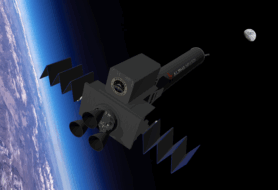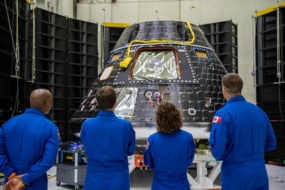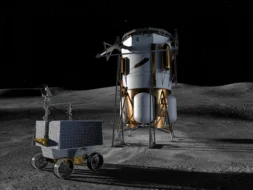NASA is developing on a nuclear-powered rotorcraft, called Dragonfly, to explore Saturn’s moon Titan. How’s it going? Depends on who you ask.
On Monday, NASA released an update on the technical progress of the Dragonfly vehicle, saying the mission was “soaring through key development [and] test activities,” and on track to launch in 2028.
Yesterday, however, NASA’s Office of the Inspector General offered a different perspective, releasing a scathing report on Dragonfly’s cost and schedule overruns, and highlighting how the mission’s missteps have swallowed up the agency’s increasingly strained budget.
How we got here: The Dragonfly mission was selected in 2019 as part of NASA’s New Frontiers Program with a pre-launch budget of $850M, and a target launch date of April 2026.
Plagued by supply chain issues, design modifications, and early development complications brought on COVID-19, these costs ballooned over the course of four replans to $3.35B, with a new launch readiness date no earlier than July 2028.
At this rate, Dragonfly’s development and operations will cost more than the previous three New Frontiers Missions combined.
- The 2006 New Horizons mission to Pluto cost $710M;
- The 2011 Juno mission to Jupiter cost $1.11B;
- The 2016 OSIRIS-REx mission to the asteroid Bennu cost $1.12B.
It’s gotten to the point where Dragonfly’s $409M allocation in FY 2025 represents nearly 15% of the Planetary Science Division’s $2.8B budget. At a projected $494M in FY 2026, Dragonfly could grow to a full quarter of the division’s (much less than anticipated) budget of $1.9B in FY 2026.
Dragonfly has drained PSD resources so much, OIG said, that future New Frontiers missions have been delayed until at least 2026, pushing back the next New Frontiers launch to 2033.
Where are we headed? As the Dragonfly team shared in Monday’s announcement, the mission is finally progressing on target: components and scientific payloads are being built, and some aerodynamic tests and durability trials have been completed.
OIG recommended that the team document “lessons learned” (meaning, learn from their mistakes) and maintain enough project cost reserves to support Dragonfly through launch, among other recommendations.
Dragonfly has so far been spared by NASA’s budget cuts, in part due to the agency’s continued focus on deep-space missions, but the government hasn’t been shy about canceling expensive projects, like the GeoXO weather satellites, to save money.
The best thing for Dragonfly to do now is to fly under the radar.




